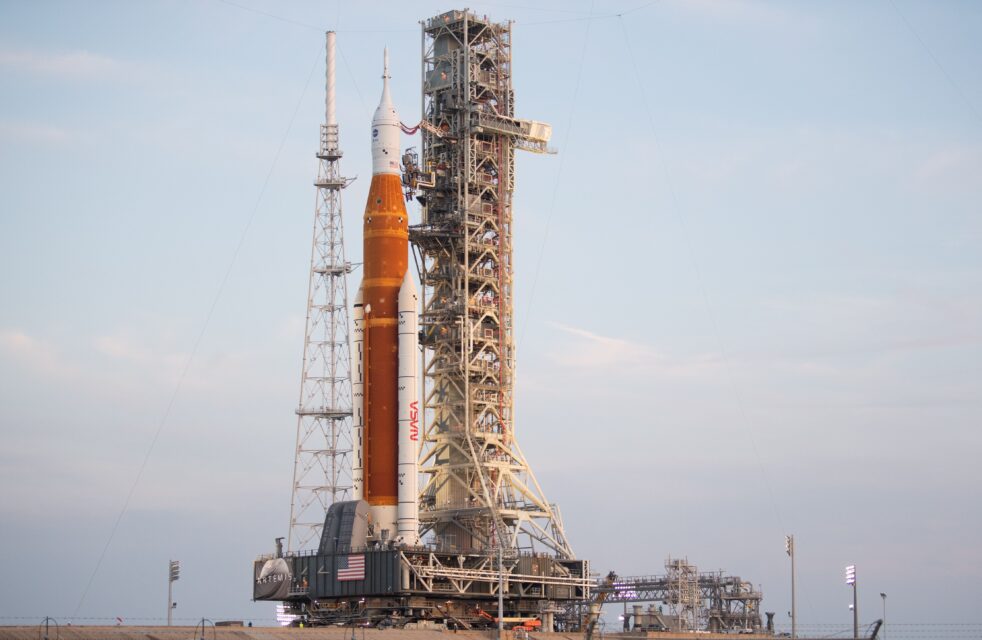Since the Apollo program ended in 1972, the moon has yet to witness the arrival of another human. However, a new wave of space exploration has started to gain traction.
Within the next five years, NASA has planned a series of launches to bring astronauts, including the first woman, back to the moon in their Artemis program.
In the time between the last footsteps on the moon and now, there has been greater technological ability, different political entanglements and better understanding of the human body, all of which create a transformative impact for the Artemis program.
The Institute, at the forefront of advancing aerospace research and particularly interdisciplinary in its studies, has a unique perspective on this new program.
Tech’s leading faculty experts from across colleges joined a roundtable discussion in late August to address the technology, impacts and future of NASA’s newest ambitions.
“For all that we celebrate about Apollo and its moment in history, this is larger. We’re about to do something that has never been done before. This is when we step off the planet to stay, preparing to become a multi-planet species,” said AE Professor Glenn Lightsey.
In fact, Lightsey and his team hold a particular stake in the program. Along with NASA engineers Terry Stevenson, Ph.D. AE ‘18, and Matt Sorgenfrei, they designed the propulsion system for the BioSentinel satellite that will be on board the Space Launch System rocket.
The Space Launch System is among NASA’s biggest and most powerful rockets, measuring in at 322 feet tall and weighing six million pounds, and BioSentinel will include the first long term biology tests done beyond Earth’s own orbit. These tests expand understanding of living organisms and the impact outer space has on them.
With the propulsion system technology, the spacecraft can point its antenna back to Earth so NASA scientists can complete tests remotely and transmit results back home.
The Artemis program and its specific missions set the precedent for future space travel, including future travel to Mars. This progression in space travel brings with it both global collaboration and competition.
The United States, with its allies Europe, Japan and Canada, has developed its own space policy. In particular, the Artemis Accords sets the foundation for cooperative, sustainable and ethical space exploration.
On the other hand, China and Russia have entered their own joint lunar and space programs with similar milestones, goals and technological capability to the United States. This begs the question: is the international community entering a modern-day space race reminiscent of the 1960s and 70s?
Associate INTA Professor Mariel Borowitz commented on this. “On one side, it is not a race because [Artemis] is not a short term investment but [instead, NASA is] looking to have space exploration be something more sustainable,” Borowitz said.
He did acknowledge that interpretation is up to the public and will depend on the events that unfold.
Optimistically, the world might collectively celebrate any state reaching the moon or in a more pessimistic way, they might perpetuate contention by comparing achievements. With no borders and limited resources, Borowitz hopes that the world’s lunar missions will encourage collaboration in new ways.
Besides this political arena, many question the practicality of the Artemis program.
Anna Redanz, fourth-year EAS student, said “From a scientific perspective, it is very important that we go to other planets to advance our understanding of our own planet, but from a climate and social perspective, we have a lot of issues on our own planet and funding should be placed into initiatives to solve our own climate problems.”
According to NASA’s Office of Inspector General, the entire Artemis moon program will cost around $93 billion over a 13 year period. Comparatively, TIME reported that $300 billion in investment, at minimum, is needed to curb climate change.
Borowitz believes “space is something that really tests the capabilities of humans: the technological capability and also, our ability to cooperate. [And] space exploration can’t be done by private companies alone, so it is a worthwhile endeavor for the government. Space and NASA is something people across the world identify and connect with.”
The Artemis program is a unique moment in the world’s history that looks to create a new future for humanity while also paralleling past global agendas.
It reflects the world’s current crossroads in limiting global warming but also celebrates humanity’s growth in capabilities for achieving feats once impossible.
More information regarding the professor and faculty roundtable discussion pertaining to the Artemis I launch can be found at coe.gatech.edu.
